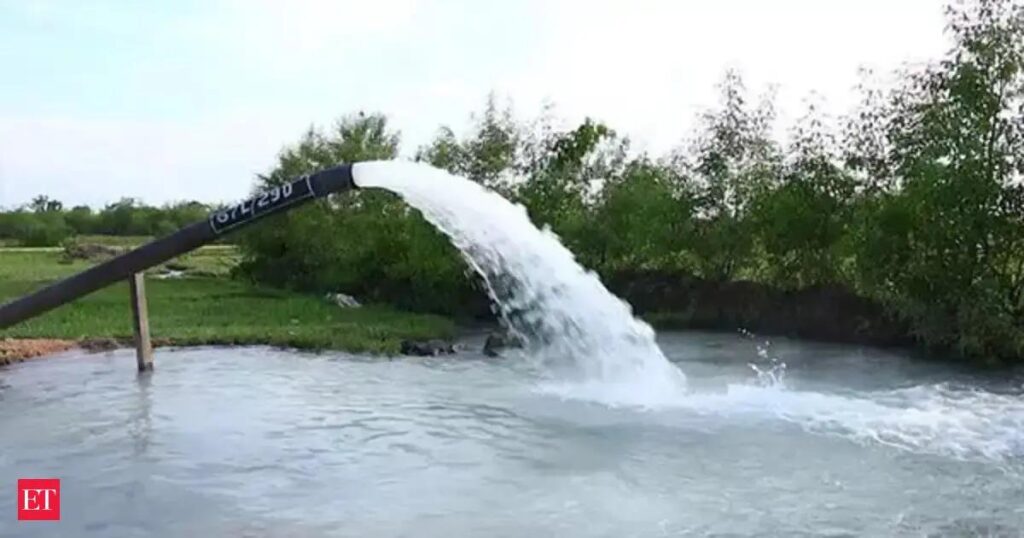Chhattisgarh unveils Rs 49,000 crore irrigation & hydropower push in Bastar as anti-Naxal ops clear path
Chhattisgarh has proposed a 49,000 crore irrigation and hydropower project in Bastar, utilizing water from the Indravati River. The projects include the Bodhghat dam and river interlinking, seeking national status for central funding. These initiatives aim to provide irrigation for 7 lakh hectares, generate electricity, and boost the economy in Naxal-affected regions.
Chhattisgarh has revealed a 49,000 crore mega irrigation and hydropower initiative in Bastar as anti-Naxal operations progress in Left-Wing Extremism-affected districts. Approximately 45 years after the Godavari Water Disputes Tribunal Award allocated 301 TMC of water from the Indravati River to Chhattisgarh (then part of Madhya Pradesh), the state has proposed two projects – the construction of the Bodhghat dam and interlinking the Indravati and Mahanadi rivers. Despite being allocated 301 TMC of water from the Indravati, the state currently utilizes only 25 TMC. The Bodhghat project aims to utilize 96.27 TMC. Due to Naxal activity, no dam or related facilities could be implemented in Bastar. Of the 8.15 lakh hectares of crop area, irrigation facilities currently exist for only about 1.36 lakh hectares. With anti-Naxal operations now in full swing in Chhattisgarh, the state government has proposed the construction of the 29,000 crore Bodhghat dam and the 20,000 crore interlinking project. According to the proposal, this will provide irrigation facilities for 7 lakh hectares of land. The two projects will cover Naxal-affected districts including Mungeli, Rajnandgaon, Kawardha, Dantewada, Sukma, Bijapur, Kanker, and Narayanpur. Chief Minister Vishnu Deo Sai met with Prime Minister Narendra Modi last week and urged that the two projects be granted national status to ensure central funding. In a letter to the Prime Minister, reviewed by ET, Sai stated, ‘Given the high cost of the project, it is very challenging for the state to implement it with its own resources. It is requested that these projects be declared as National Projects, so that their execution can be assured for the development of Bastar.’ In addition to irrigation, the Bodhghat multipurpose project is expected to generate 125 MW of electricity and produce 4,824 tonnes of fish annually. It will also provide water for drinking and industrial use. According to the state’s proposal, 269 villages will directly benefit. However, there are significant challenges to implementation, including 10,440 hectares of land to be completely submerged, 28 villages to be entirely affected, and 14 to be partially impacted. The Indravati-Mahanadi interlinking project will also require clearances from the Central Water Commission and the Ministries of Environment and Tribal Affairs.
Chhattisgarh has proposed a 49,000 crore mega irrigation and hydropower initiative in Bastar as anti-Naxal operations progress in Left-Wing Extremism-affected districts. Around 45 years after the Godavari Water Disputes Tribunal Award allocated 301 TMC of water from the Indravati River to Chhattisgarh (then part of Madhya Pradesh), the state has proposed two projects – the construction of the Bodhghat dam and interlinking the Indravati and Mahanadi rivers. With anti-Naxal operations now in full swing in Chhattisgarh, the state government has proposed the construction of the 29,000 crore Bodhghat dam and the 20,000 crore interlinking project. In a letter to the Prime Minister, reviewed by ET, Sai stated, ‘Given the high cost of the project, it is very challenging for the state to implement it with its own resources.’


